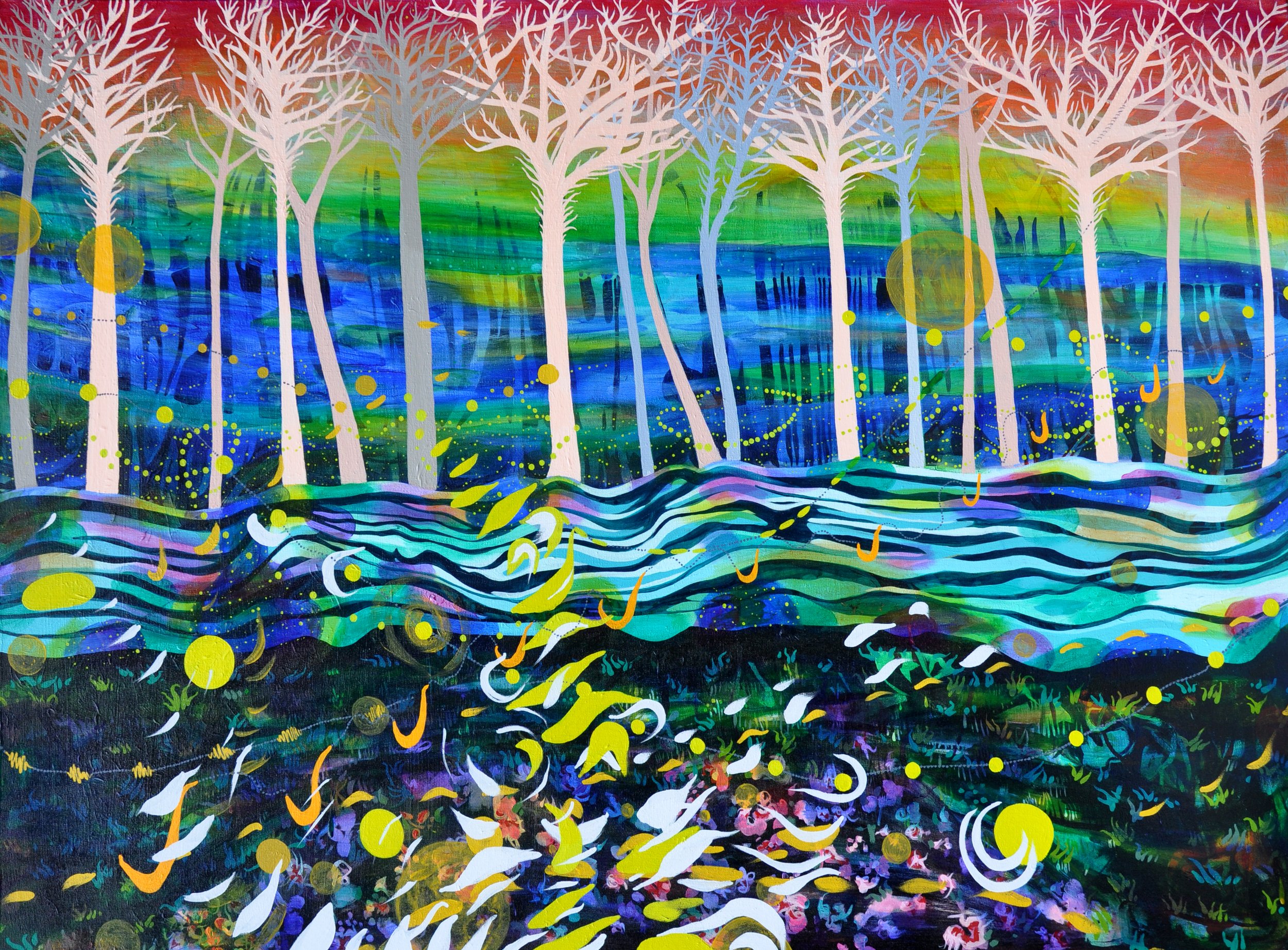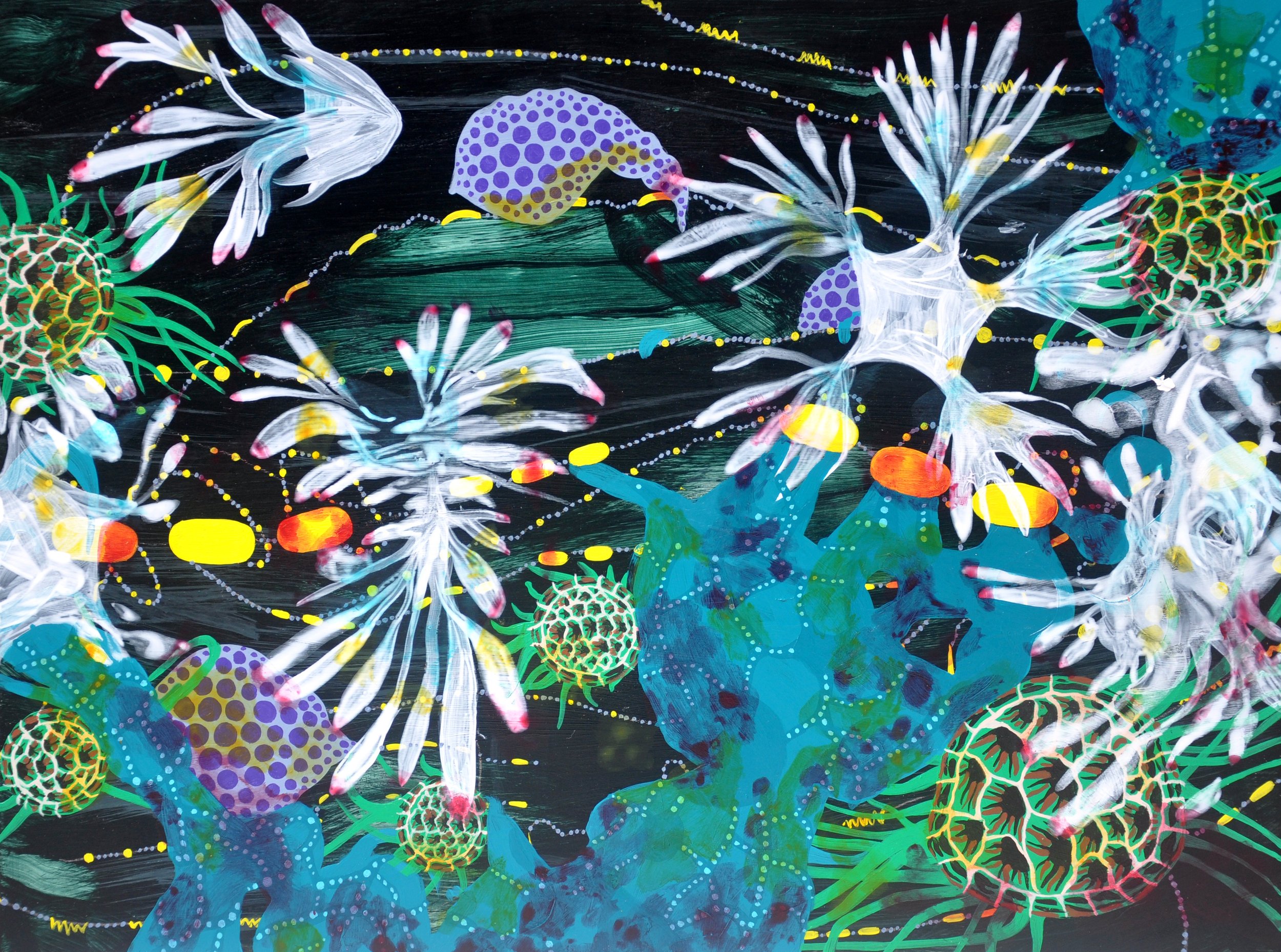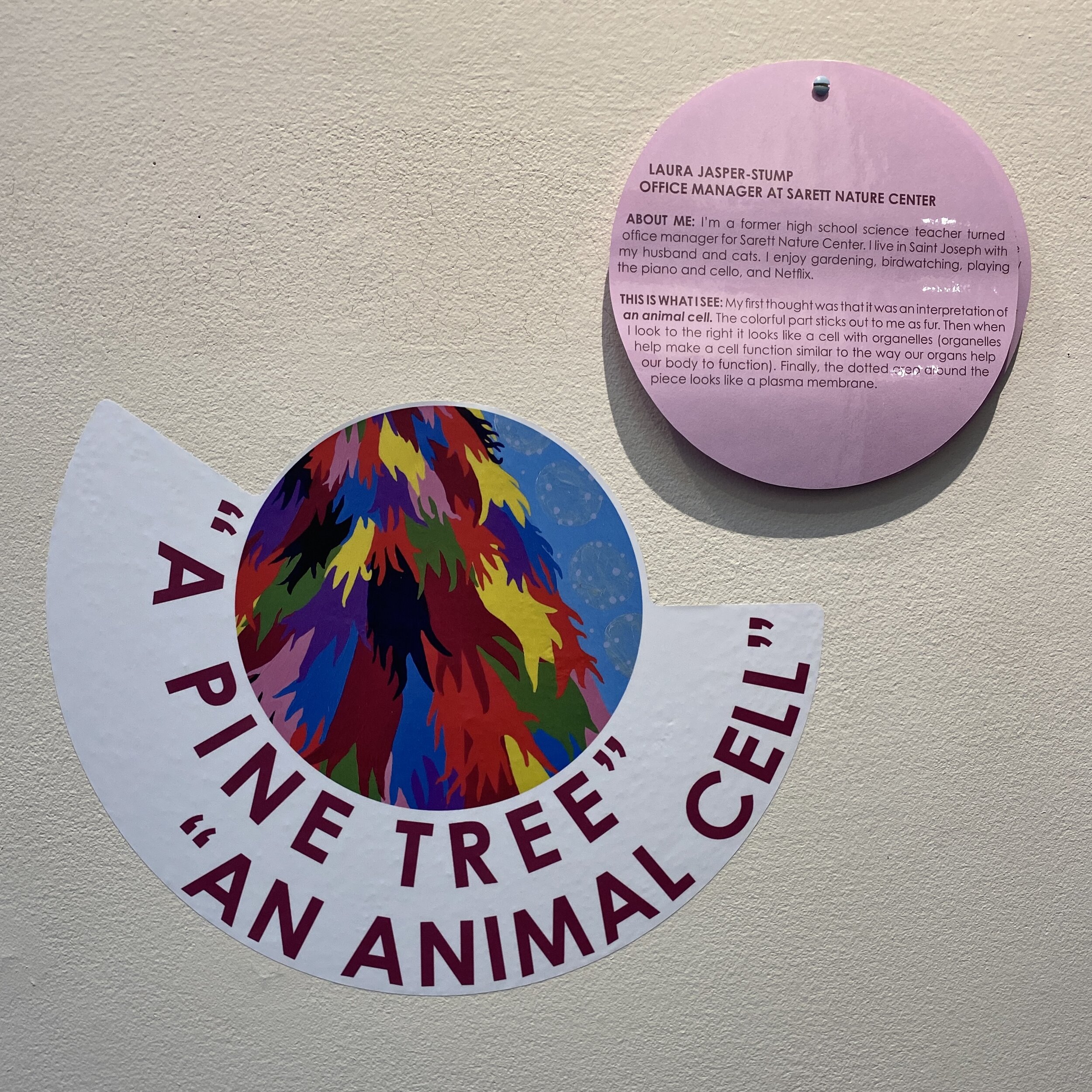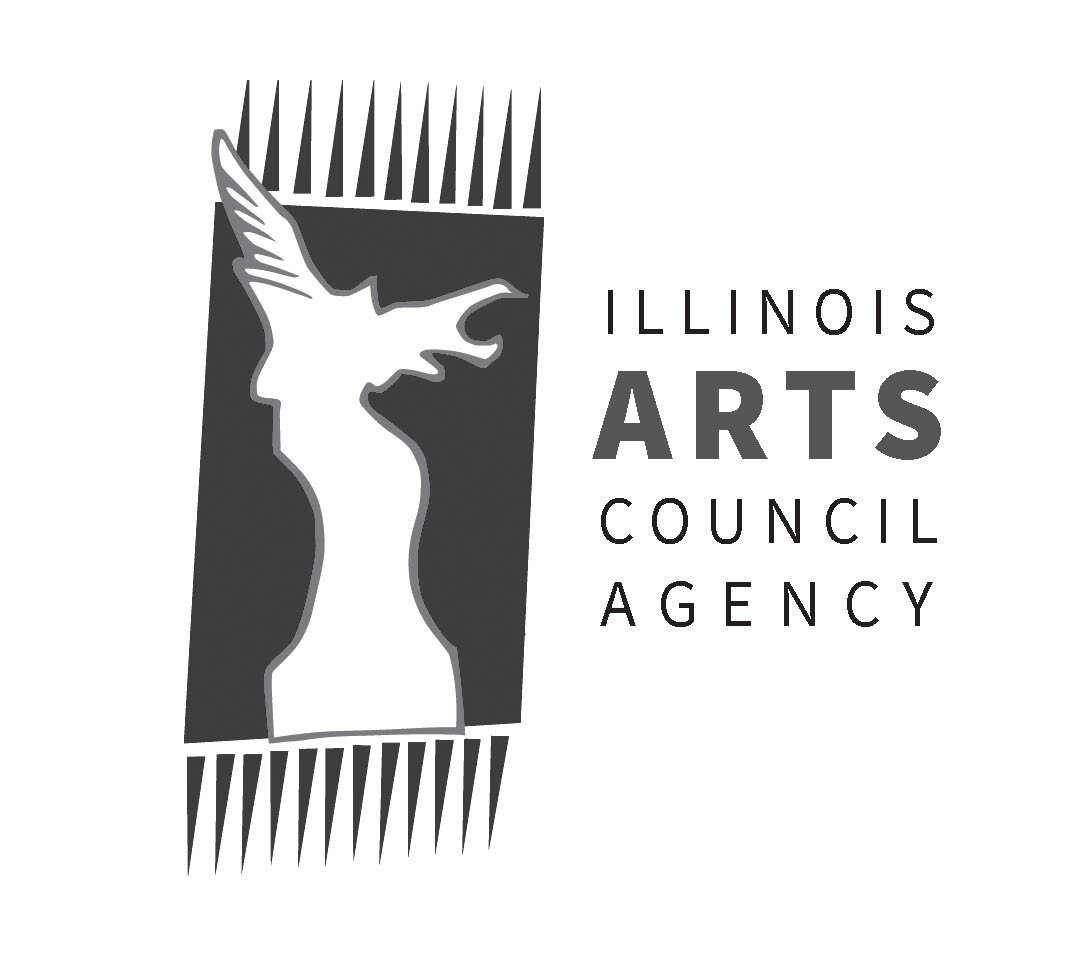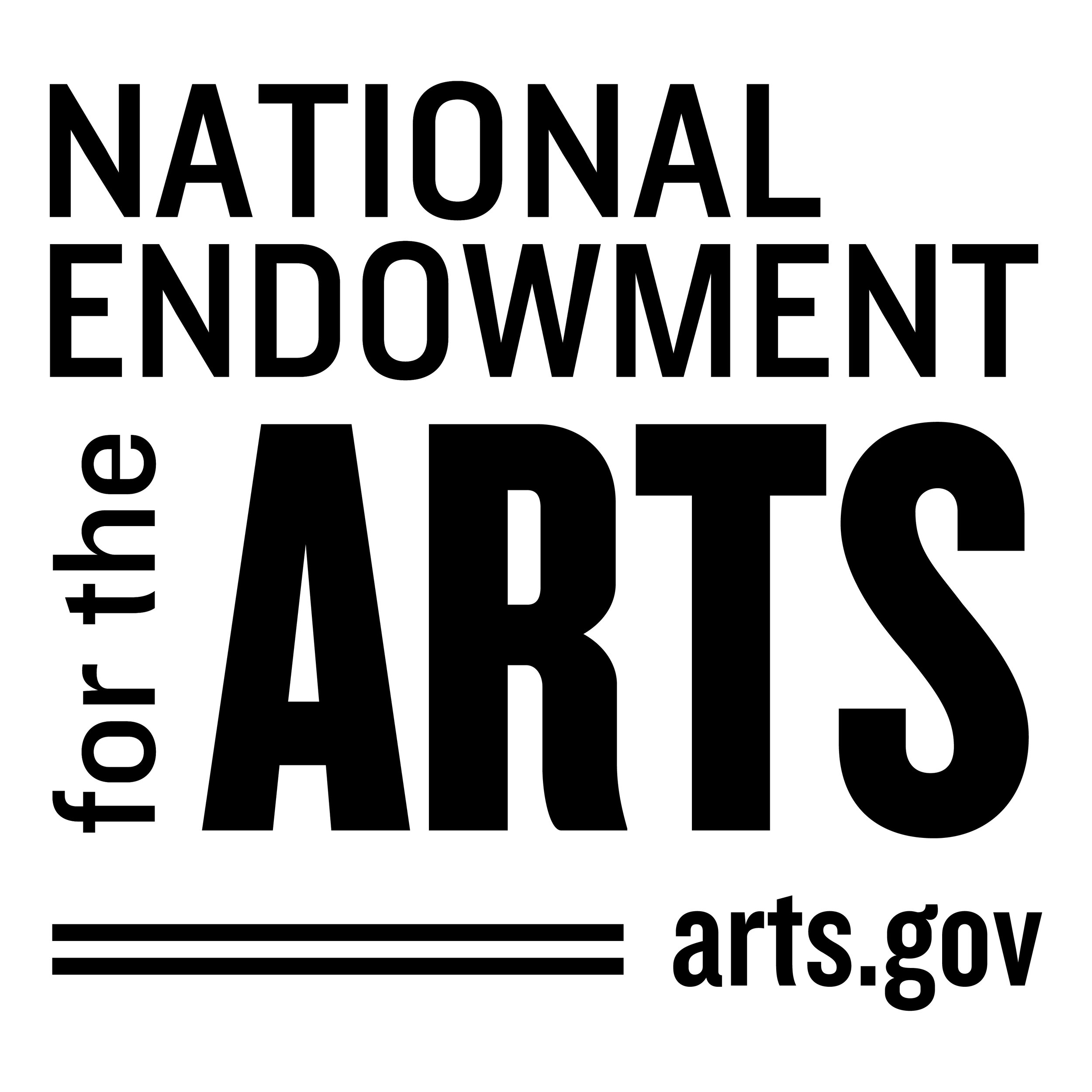I had a chance to create a new painting inspired in part by the comb jellyfish. The underlying structure of this painting started with looking at images and videos of the bioluminescent creature that lives in the deep ocean.
This is the same creature that inspired H.R. Giger to create the alien for the alien movies. I think his interpretation is much more menacing than my own. I use my own language of painting to create the otherworldly unseen universe in each original art piece.
As in many of my artworks, some inspirations are nameable in our world and some are completely abstract. However, I think my visual language adds secrets and hidden meanings to these real sources. The viewer can consider if is this real or not. I want viewers to question and look within their knowledge of the universe to see what they can figure out, decode, or even imagine.
I sometimes wonder if it is important for me to name the creatures that inspire my work because I change it so much from the the original source that it is hardly recognizable. I was also inspired by diatoms which are the light blue and purple forms in the night sky or deep ocean. There are many forms in this painting that are invented and do not come from our world. This painting is part of the GLOW series created in 2012-2013 but this new piece was created in 2024
Radar, 14" x 16", acrylic on canvas, 2024, private collection.
The album layout was designed by Graphic Designer Alexander C. Sprungle https://sprungle.co/ He did such a great job with the project and I love the little details he took from my painting and added to the layout here.
My amazing artist friend Justin Henry Miller recommended my artwork for this project. Thank you so much to Justin! Please check out his work as he is an incredible artist based in Missouri and shows frequently here in Chicago at ZG Gallery.
You Can Pick it Up On Radar, 20" x 20", acrylic on canvas, 2013, private collection
How to Be Human
April 28, 2017
“It's been almost five years since The Classic Crime dropped their last full-length album of originals, called Phoenix; and many wondered what they would get from their newest offering… Thankfully, the Classic Crime are still around. And thankfully, they’re still making some of the best music out there. The suitable conclusion that the album arrives at in its final line ("Savior/Save me") serves as an appropriate statement to end such a colorful listening experience.”
Spotify | Apple Music | Bandcamp | Youtube














